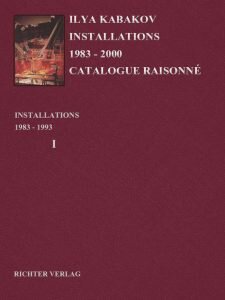The Toilet
YEAR: 1992
CATALOGUE NUMBER: 59
PROVENANCE
The artist
Sammlung Museum, S.M.A.K., Stedelijk Museum Voor Actuele Kunst, Ghent
EXHIBITIONS
Kassel, Museum Fridericianum
Documenta IX, 13 Jun 1992 — 20 Sep 1992
Ghent, Stedelijk Museum Voor Actuele Kunst
Permanent Installation, S.M.A.K., 8 May 1999
CONCEPT AND DESCRIPTION OF THE INSTALLATION
The installation is built in the ‘backyard’ of the ‘Fridericianium’ (where the exhibit Documenta is going on in the main building) and consists of an almost exact copy of toilets that were built in the 1960’s and 1970’s in Russia in the provinces near bus stops and train stations. Each of us is familiar with these dreary small stone structures, smeared outside and inside with white lime, with filthy curses written on the walls, soiled and neglected. The sight alone invokes loathing and vomiting. There are broken windows beneath a low roof. The entrances for men and for women are on opposite sides. The doors, which are always opened, are painted a dark red-brown color. Inside is the same horrendous, revolting appearance. Between thin walls are small cement raised places, in the middle of which are black round holes. It never even occurs to anyone to sit down on them, and they ‘sit down’ standing up, squatting, as we say ‘in an eagle position.’ Of course, no doors were even intended for these ‘stalls,’ and anyone entering the toilet can see perfectly who is ‘taking care’ of their needs and how they are going about it. The men’s and women’s halves are not different in any way.
Such a toilet, almost exactly, is built at Documenta. But the viewers, standing in two lines (women and men separately), once they are inside, see a totally different picture. No, the internal space has remained unchanged, exactly as described above, but that which is arranged inside is completely uncharacteristic and impossible for a toilet. It is a typical Soviet two-room apartment (in the men’s half is the living room, in the women’s half is the bedroom) with normal furniture: a table covered with a tablecloth, a buffet, a couch, chairs, wall-unit with books; in the bedroom is a bed, a children’s corner with a small rug with toys, paintings on the walls. Everything has a normal, lived-in, ‘everyday’ appearance: dishes are still on the table from dinner, a jacket is hanging on the chair … Life is going on here normally. A quiet, decent, friendly family lives here, and it’s possible that they just stepped out for a minute to see the neighbors …
And this is ‘normal’ life in a toilet … Is it necessary to explain further the metaphor of this installation?
Images
Literature








